Winter and summer gas - what is the difference? Which gas is better to use for refueling gas tanks
Autonomous gasification is practical and economical in the use of blue fuel. But for refueling gas holders, the market offers winter and summer gas, which differ significantly in price.
Agree, I want to save each of us. But is it worth doing in the case of gas fuel? Next, we will analyze in detail - how good a cheap LPG is, what are its features and how it will behave in the winter.
The content of the article:
Grades of gas fuel for a gas holder
The most important thing is to clearly distinguish gas main and gas. Both options are used both for heating and cooking on the stove. However, these are fundamentally different gas compositions. In the case of the pipe, we are dealing with methane CH4, and a propane mixture C comes from the gas tank3H8 and butane C4H10. The second type of “blue” fuel will be discussed later.
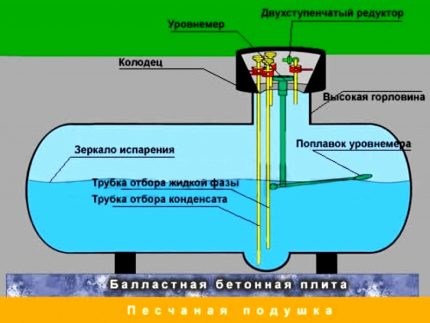
A propane-butane mixture with a small amount of impurities is poured into the gas tank. Methane is not used in this case, since it is too expensive to liquefy it for use in autonomous gas supply. To obtain liquefied natural gas, the methane fraction must be cooled to -160 ° C. This is done at special plants, it costs a lot of money and is used only for transporting LNG over large distances in large volumes.
Liquefying propane with butane is a cheaper operation. To do this, they need to be cooled to much lower temperatures than methane. Plus, you can store LPG for a long time in a simple gas cylinder or gas tank without special events. Therefore, it is customary to use the propane-butane mixture in the autonomous gas supply of private households, as well as as fuel for cars.
GOST regulates the use of LPG in the form of:
- PT - technical propane;
- BT - technical butane;
- SPBT - mixtures of propane and technical butane.
The use of these brands in each case depends on climatic conditions and the type of gas tank.
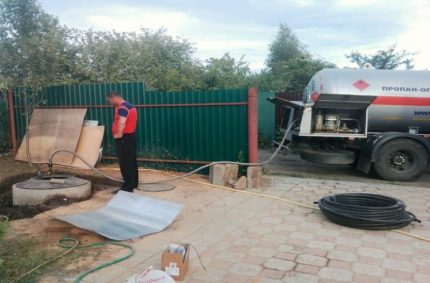
BBF is a cheap and low-quality gas with condensate. When it is burned, approximately 10% less heat is generated than when using conventional SPBT. It is quite acceptable to pump such fuel into a gas tank and burn it in boilers. However, its use is not the best way affects the service life of gas equipment, significantly reducing it.
Difference of winter LPG from summer
A mixture of propane and butane in a gaseous state is well mixed with air, which ensures its uniform combustion and complete combustion. At the same time, GOST provides for a floating ratio of shares of C3H8 and C4H10 in LPG. From here comes the separation of liquefied gas into summer and winter brands.
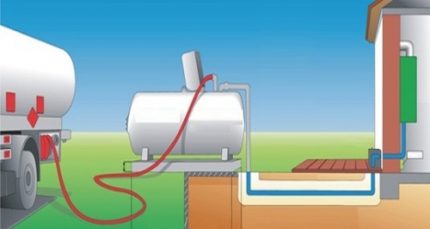
The transition of LPG from liquid to vapor occurs inside the gas tank. Moreover, if butane at normal pressure is able to transfer from liquid to gas at temperatures only up to -0.5 ° C, then propane can reach -42 ° C. If in a liquefied form one or another fuel cools below these indicators, then its transition to the vapor phase will be impossible.
In the cold outside at minus 10–20 ° С, butane will remain in the form of a liquid. As a result, it will become unsuitable for use in a gas boiler for heating or heating water for domestic hot water. The less it is in the winter in the gas tank, the better.
In the “winter” gas, the proportion of propane reaches 80%, while in the “summer” gas it is only about 50%. Bhutan is much cheaper, so they try to add as much as possible to LPG. However, it is also difficult to do without the propane component.
Propane is responsible for the pressure in the system and the stability of the liquid / vapor phase transition. If for the winter a “summer” version of LPG is poured into the gas tank, then at some point the evaporation of the liquefied mixture will cease. As a result, the boiler will be left without fuel, and the house without heat.
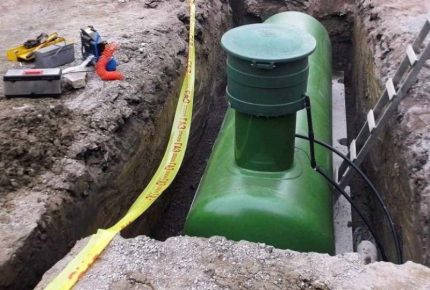
The basic difference between the “summer” and “winter” brands of gas holder gas is the ratio of propane and butane in the LPG. The larger the first, the better at any time of the year. However, with an increase in the propane fraction, the price of fuel also increases.
If the gas holder is not buried in the ground in accordance with the requirements of SNiPs, and in winter the air temperature drops below zero, then the “summer” LPG mixture in it will certainly cease to pass into the vapor phase. And then at the most inopportune moment propane will completely evaporate and be consumed, but butane will never become gas.
Which option is better to choose?
The more butane in the LPG, the cheaper the liquefied gas for the gas tank. But the efficiency and stability of gas tank equipment directly depends on the more expensive propane contained in the propane-butane mixture. Cheapness is not always good. Wanting to save on fuel, you can end up in the cold without heating at all.

In the case of a gas tank with a depth below freezing, the situation is not so clear. In a warm region, the heat of the earth is usually more than enough to ensure high-quality evaporation of butane, even in short-term frosts down to -15 ° С. As a result, there is no reason to spend money on an expensive winter version of LPG.
In addition, 50% propane is a good supply in case of short-term frosts.It will be spent in frosts, but when warming, butane will again go into the boiler. This will not create any problems for gas equipment.
However, if a house with a gas tank is located in a cold or very cold climatic region, then you cannot do without using fuel with a high content of propane. In such a region, it is better to refuel the gas tank with gas designed specifically for winter in advance in the fall. You should not save here, otherwise you will have to freeze.
We also recommend that you familiarize yourself with the installation of the gas tank on the site. More details - go link.
Features refueling and clogging
According to the norms, the gas holder is not completely filled with liquefied gas, but by 85%. The remaining 15% is needed to transfer the liquid / vapor phase and create a pressure inside the vessel. If the tank is filled only with summer mixture during the year, then in the winter, butane in the form of liquid will accumulate in it to the eyeballs. Then it will be simply impossible to add new propane fuel, and the existing one cannot be used for its intended purpose.
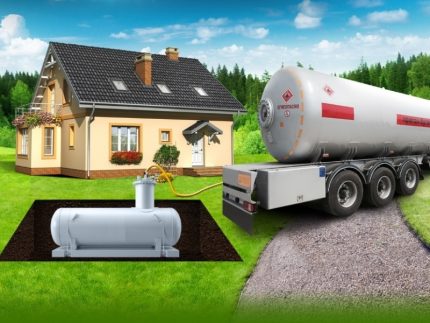
Clogging a gas tank is a serious problem. To pump out the resulting "condensate", you have to call gas workers. At the same time, they will take considerable money for pumping, and then pumped out butane will be diluted with propane and refilled with someone else gas tank. For the supplier, a double fat, and for the owner of an autonomous gas supply system, some costs. It is better not to allow such a situation initially.
To avoid clogging, one of three methods is used:
- By winter and autumn, the “winter” LPG is poured into the gas tank.
- A special evaporator is installed to force the conversion of liquefied butane into gas.
- The gas holder is wrapped outside with a heating cable.
Most often the first method is applied. But the second two should not be ruled out either. The operation of the evaporator and heating cable is the cost of electricity. But if such equipment is installed and used, then it is safe to order cheap “summer” gas for the winter.
How not to cheapen when buying gas?
The difference in price between summer and winter gas is about 30–40%. The cheapest it is sold in the spring, and the most expensive - in the fall. And of course I want to save money here, especially if the gas holder is roomy. However, if LPG is offered at a cost per liter well below the market in a particular region, then it is worth considering seriously.
It is impossible to clearly state which gas is best poured into the gas tank for the winter, the final decision depends on:
- type of installed capacity;
- climate of the region;
- presence / absence of additional equipment.
In some situations it is more advantageous to install a forced butane vaporizer and purchase cheap summer gas, while in others it is only to opt for a winter LPG. For each specific case, the cost calculation needs to be done individually. Moreover, the price of liquefied propane in each region is different.
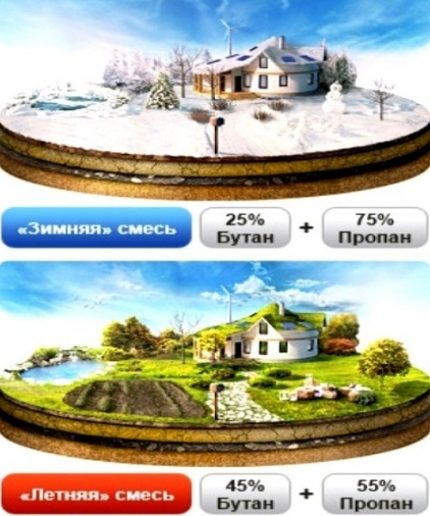
The cost of refueling a gas tank depends on:
- full capacity;
- the remoteness of the village;
- seasonality and type of gas (summer or winter);
- actual injection volume and barrel size of the ordered gas carrier.
If you come across a supplier with a very low price on the market, you should once again think about how high-quality gas it has. On the one hand, it is able to slip summer instead of winter LPG, and on the other, completely pour a poor-quality mixture with condensate and impurities into the gas tank.
To buy fuel for a gas tanker should only be from time-tested sellers. In case of problems, replacing the liquefied gas tank will cost a round amount.Excessive fuel savings are potential, and often inevitable, costs of repairing gas equipment.
Conclusions and useful video on the topic
Recommendations for refueling a mini-gas tank:
The process of pumping gas from a gas tank to repair it:
How to cheat when refueling a gas tank:
In summer, winter gas will burn without any problems. But the use of summer LPG in winter is not always possible. In order not to meet the cold with low pressure in the gas tank due to delayed vaporization, it is best to refuel it with liquefied fuel with a high propane content in the fall. But if the region is warm or special equipment is installed, then it is perfectly acceptable to fill the tank with cheap summer propane-butane mixture all year round.
Leave your comments, ask questions, share experiences and participate in the discussion of this material. The communication unit is located under the article.

 Varieties of gas holders: the basics of classification + an overview of popular brands
Varieties of gas holders: the basics of classification + an overview of popular brands 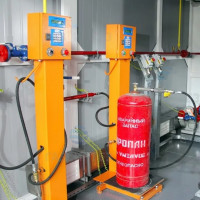 Filling rules for household gas cylinders at gas stations: safety standards and requirements
Filling rules for household gas cylinders at gas stations: safety standards and requirements 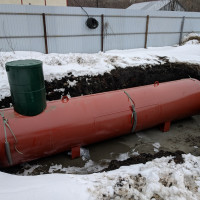 Frozen gas holder: common causes and ways to quickly fix the problem
Frozen gas holder: common causes and ways to quickly fix the problem 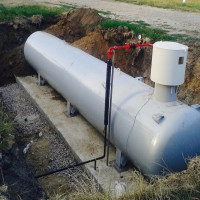 Gas heating with a gas tank - is it worth it? Overview of all the nuances, advantages and disadvantages of such a solution
Gas heating with a gas tank - is it worth it? Overview of all the nuances, advantages and disadvantages of such a solution 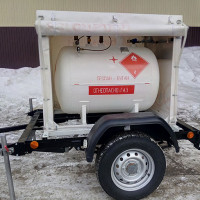 Mobile gas tank: purpose, design and installation features, placement requirements
Mobile gas tank: purpose, design and installation features, placement requirements 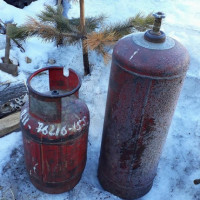 Why is a gas cylinder covered with hoarfrost: causes of freezing of gas in the cylinder and ways to prevent it
Why is a gas cylinder covered with hoarfrost: causes of freezing of gas in the cylinder and ways to prevent it  How much does it cost to connect gas to a private house: the price of organizing gas supply
How much does it cost to connect gas to a private house: the price of organizing gas supply  The best washing machines with dryer: model rating and customer tips
The best washing machines with dryer: model rating and customer tips  What is the color temperature of light and the nuances of choosing the temperature of the lamps to suit your needs
What is the color temperature of light and the nuances of choosing the temperature of the lamps to suit your needs  Replacement of a geyser in an apartment: replacement paperwork + basic norms and requirements
Replacement of a geyser in an apartment: replacement paperwork + basic norms and requirements
I would like to refuel the gas tank only once a year, in the spring. Spaciousness allows, but with these troubles with winter and summer brands I did not fully understand. Is it possible to overpay these 30%, refuel with the winter option and use gas all year round?
If you are not confused by the cost, then the winter mixture with a high content of propane may well be used in the summer. The only limitation is that the cylinder should not be allowed to heat up to 50 ° C, otherwise the pressure in it will rise to 17 atm, and this is dangerous. Observe TB, do not store the bottle in the open sun and everything will be fine.
Hello. What do gas workers directly answer to such questions. Look, the “summer” gas goes in the ratio of 50: 50-60-40 (propane-butane), and in the summer 75: 25-80: 20. The best evaporation temperature of butane is positive, propane is negative.
At room, stable temperature, the pressure over liquid propane is approximately 9 atm, while at the same time, butane has a pressure of 2 atm. When heated to 50 degrees Celsius, the pressure in the propane cylinder can increase to 17 atmospheres, which is not safe. However, the climate usually does not reach such temperatures in our country, and the pressure on the cylinders is even higher. So, yes, you can leave winter gas for the summer, subject to the temperature regime.
But, again, the standards guarantee a shelf life of liquefied gas of 3-6 months, which depends on the quality of the gas and GOST. If it is 3 months and you adhere to such rules (although they are simply guaranteed, in fact, longer), then you still have to change the gas.